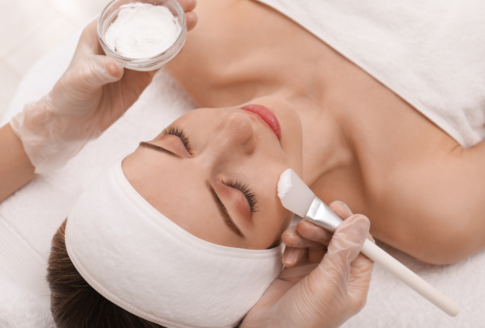Blue radiance: What is its effect on the skin?

We know we need to protect ourselves from ultraviolet radiation (UVA and UVB rays) but in recent years experts say that is not enough. We must also protect ourselves from some of the visible light, blue radiation or blue light, which is emitted not only by the sun but also by our digital devices.
Table of Contents
UVA and UVB radiation
For many years, scientists have focused on the damage caused by ultraviolet radiation to our skin. The UV that affects our skin consists essentially of UVA rays (315-400 nm) and UVB rays (280-315 nm) [1]. UVB penetrates only into our skin while part of UVA penetrates deeper into the skin reaching approximately the middle of the dermis which is located under the skin.
While UVB is much more to blame for melanoma, UVA is the main cause of photoaging. UVA damages not only the skin cells but also the collagen and elastin that make up the skin structure and maintain the elasticity of the skin, something that was not initially adequately appreciated. Damage is caused by the oxidative stress caused by ultraviolet radiation.
What are the sources of blue radiation?
There are two main sources of blue light: the sun (blue light is why you see the sky as blue) and monitors. All digital screens emit blue light: your smartphone, TV, computer, tablet and smartwatch. To date it is not clear whether most of the blue light exposure comes from the sun or the screens we have next to us but obviously it matters a lot how attached we are to digital devices and what size they are.
Blue radiance and skin
More recently, scientists have realized that even blue light has the potential to damage all layers of the skin, causing oxidative stress. In fact, blue light, which has a wavelength of 400 to 500 nm, penetrates the entire skin and reaches the layer below it, the adipose tissue. Most sunlight does not pass through the skin, but 1-5% of the violet-blue and green light is able to penetrate deep depending on the wavelength.
Thus, violet-blue light, also known as HEV light (High Energy Visible light) has the ability to penetrate deeper into our skin, compared to UVA and UVB rays, contributes to the formation of wrinkles and skin aging [2] . When volunteers were exposed to either blue light or UVA, in the first case there is more redness and swelling.
Studies show that visible light may also be more effective at causing skin pigmentation (dark skin) compared to ultraviolet light. One study showed that melanin production in the skin doubled when exposed to blue light versus UVA.
On the other hand, some wells made of blue light have been identified. Those who suffer from acne can use blue light as a treatment, which is recommended by many skin care professionals [3]. There is research showing that, in small doses, blue light is an effective treatment for certain skin disorders. However it is difficult to ignore the possibility of damage it can do.
It should be noted that one study found something unexpectedly good. Blue sunlight has an effect on subcutaneous adipose tissue, shrinking fat cells [4]. As it reaches the third basic layer of the skin, the subcutaneous adipose tissue, the lipid droplets shrink in size and are released by the fat cells. This means that the fat stored in our cells is reduced, however it is not known if this effect of blue light is significant.
At Vita4you.gr you will find a large variety of creams for protection against blue light!
References
Disclaimer
The content of this blogspot is not and can not be considered as medical advice, diagnosis or treatment. All information is provided to readers solely for informational purposes. There is no intention to substitute this content for personalized medical advice, diagnosis, prognosis or treatment.







Leave a comment